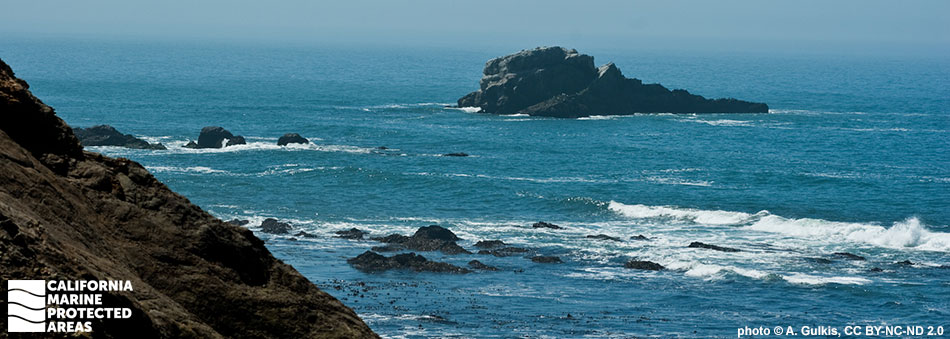
Overview
Double Point/Stormy Stack Rock Special Closure is located a few miles north of Duxbury Reef State Marine Conservation Area in Marin County. Stormy Stack Rock is a pinnacle that sits roughly 800 feet from shore at the north end of the Double Point Area of Special Biological Significance. Adjacent to Stormy Stack Rock, the rugged sea cliffs of Double Point extend into the ocean in two places, encompassing a crescent-shaped sandy beach where harbor seals haul out to breed. The special closure was established in 2010, creating a 300-foot buffer around Stormy Stack Rock to protect this special bird rookery and marine mammal haul-out site from human disturbances year-round.
One of California’s 14 special closures, Double Point/Stormy Stack Rock Special Closure boasts the second largest bird rookery along this stretch of coast. Brandt’s cormorants, brown pelicans, pigeon guillemots, and ashy storm-petrels fly overhead and nest on this offshore rocky landscape. California sea lions haul out on the exposed shores of Stormy Stack Rock as they take a break from feeding in the surrounding waters that are rich with salmon, lingcod, and halibut.
Regulations
Boating and access are restricted. No person except employees of the California Department of Fish and Wildlife, United States Fish and Wildlife Service, National Park Service, or United States Coast Guard during performance of their official duties, or unless permission is granted by the California Department of Fish and Wildlife, shall enter the area.
California Code of Regulations Title 14, Section 632(b)(49)(opens in new tab)
Quick Facts
MPA size: 0.02 square miles
Depth: 0 to 32 feet
Habitat composition*:
- Rock: 0.01 square miles
- Sand/mud: 0.04 square miles
*Habitat calculations are based on three-dimensional area and may exceed the total MPA area listed above.